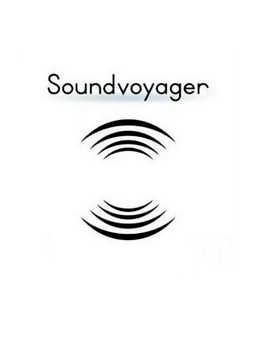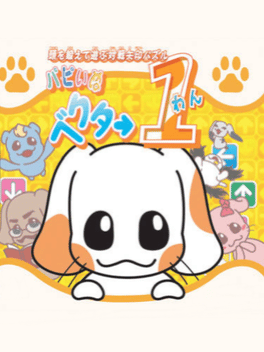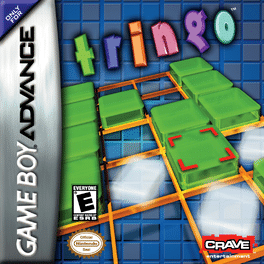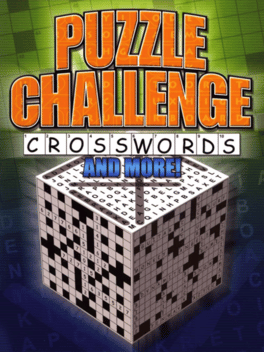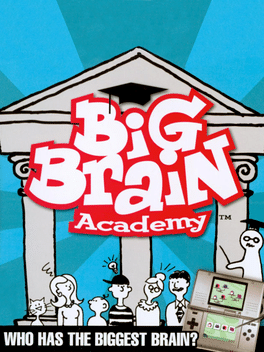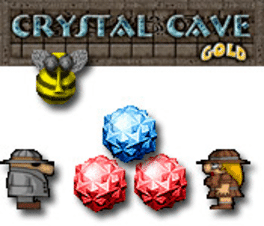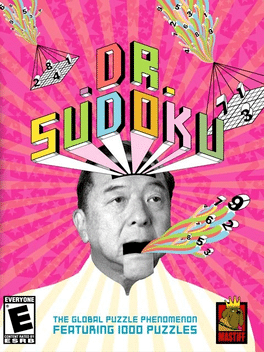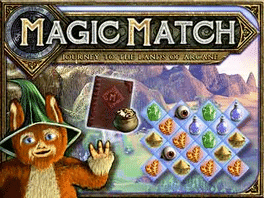New Puzzle Games - Page 240
-
Bit Generations: Orbital
2006
Bit Generations: Orbital is a Game Boy Advance video game released exclusively in Japan as part of the second series of bit Generations titles. It is an innovative title that has the player consolidating a multitude of planets together in each stage to create on large rock. It was remade on WiiWare under the title of Art Style: ORBIENT, and was the first of at least three titles to be released in the Art Style series. Gameplay Before starting a stage the player will have to choose which galaxy he or she wishes to play within and then the stage. Following this your small star will shoot towards a large body with a varying amount of small stars orbiting it. The goal is to come in possession of those other stars in order to increase the size of the primary one. When ready, the player will shoot out of the orbit of a star and then be pulled into another one when he enters its range. If the player touches the star that the smaller ones are revolving around, then your star will blow up. With this said, it's suggested yo -
Bit Generations: Soundvoyager
2006
Bit Generations: Soundvoyager is a Game Boy Advance video game released in July of 2006. It was developed by skip Ltd. and published by Nintendo. The game was unfortunately never released outside of Japan. The game can be played entirely without looking at the screen, as the point is to listen to the sounds that are emitted from the Game Boy Advance's speaker. It should be noted, however, that it is quite a challenge to listen to the noises coming from the speaker, and that it's a lot easier to hook up ear phones or hook the GBA up to a stereo. It will also be very helpful to be in a quiet space. -
Word Bump
2006
-
Bejeweled 2 Deluxe
2006
Bejeweled 2 Deluxe
2006
star 6.9Bejeweled 2 Deluxe is the enhanced, standalone version of the free online puzzle game of similar name. It builds on the original award-winning game, with the same basic objective of matching "jewels" in a grid by threes, by swapping adjacent jewels of different colors. Sharper graphics and more special effects improve the experience. -
Puzzle Challenge: Crosswords & More!
2006
Puzzle Challenge: Crosswords & More! offers more than 200 hours of gameplay, ranging from easy to difficult standard crosswords, codebreakers that require the player to determine number matches assigned to each letter of the alphabet, puzzles with cryptic clues, diamond shaped puzzles and backwards puzzles where the player fills in their own black squares. Word searches come in standard or themed versions. Profiles can be set for multiple players so that the entire household can use the software. Exclusive to the PSP system version is a two-player game sharing mode that enables two people on separate handheld consoles to play the game via wireless connection using one disc. -
PuzzleLand
2006
PuzzleLand
2006
A Flash-based puzzle game much like the Hapland series, players must safely guide James Mahoggany to the end of each screen. To do this, the player must click on a series of objects on the screen in the correct order. Different scenarios play out depending on which objects were clicked first, leading to many dead-end scenarios where the player must try again. -
Tringo
2006
Tringo
2006
Tringo combines elements of puzzle games and bingo in a challenging brain-twister. Players start with a blank board on which they must place 35 game pieces that appear one by one during the timed turns. Points are scored by fitting the pieces to form solid blocks and clearing the blocks from the board. You've got to move quickly but carefully because missed pieces lose points. Tringo was developed first by Nathan Keir within Second Life, a virtual world that encourages players to create their own content. Brought to the GBA, this handheld version is optimized for portable play for quick play and multiplayer gaming. -
Kaitou Rousseau
2006
Kaitou Rousseau
2006
In Kaitou Rousseau (aka. Rousseau the Thief), you take the role as a thief who is trying to hide from the police. Rousseau has one very tricky ability, which is to change the shape and look of his face. By drawing images on the Nintendo DS touch screen, you can adapt Rousseau to the current surroundings and thereby evade his chasers. For example, you can draw a picture of a girl to throw off the cops when in a crowd or quickly sketch what's on a nearby wall to blend in with the background. -
Puzzle Challenge: Crosswords and More
2006
Includes various puzzles including crosswords, codebreakers, word search, and more. -
Big Brain Academy
2006
Big Brain Academy
2006
star 6.6Big Brain Academy features 15 activities that test their brain powers in areas like logic, memory, math and analysis. Up to eight people can play with a single game card, and each activity takes less than a minute to complete. -
Crystal Cave Gold
2006
Crystal Cave Gold
2006
Crystal Cave is a supreme family-fun puzzle game. Collect all crystals from ancient lost tombs. Challenge your brain! Search long-lost treasures in pitch black caves, pyramids and dark tombs of ancient temples in this wonderfull puzzle game! Huge gemstones were sheltered from the sunshine for eons of time waiting for those who are brave. You as an intrepid tomb seeker must resolve puzzles of pharaohs, aztecs, fight kings and show courage in many adventures to get them all. More than 100 levels sorted by the difficulty Three graphic scenarios Lots of logical riddles as well as action elements Use boulders, different types of rocks and teleports to get gems -
Stratený v Európe
2006
Stratený v Európe
2006
Lost in Europe is a game where you travel in 25 countries and go sightseeing in the European Union. -
Dr. Sudoku
2006
Dr. Sudoku
2006
Sudoku is the puzzle phenomenon from Japan, a game that looks like a math problem, but is in fact a twisting puzzler. The rules are simple: start with a grid consisting of nine three-by-three squares in which some of the numbers are already supplied. Fill in the blank squares so that each column, row, and three-by-three grid contains a number from 1 to 9 with none repeated. Dr. Sudoku for the Game Boy Advance is the first of a series of Sudoku products from Mastiff. The GBA title features 1,000 hand created puzzles, Original Mode (which lets you create you own Sudoku puzzles,) a tutorial mode, help for those moments when you really are stuck, the ability to "pencil in" possible solutions, and a puzzle problem creation mode. -
Plus Plum 2 Again
2006
Plus Plum 2 Again
2006
A competition puzzle game which features three types of falling objects that must be color-matched in groups of three. -
Super Collapse 3
2006
Super Collapse 3
2006
star 4.7Super Collapse is back, and you won't believe the fun! The third installment of this highly addictive series boasts more action and surprise than ever before. Adventure awaits as you explore 10 fun and unique lands in the all-new Quest mode. Earn coins along the way to purchase strategic items in the Shop, or take a breather and try your luck at one of 10 mini-games in the Casino. And for the true Super Collapse aficionado, new variations and classic favorites in our Quick Play mode deliver endless, back-to-back challenges. Explore the secrets of Collapse world in 140 brand new puzzles! -
Tiki Boom Boom
2006
-
Magic Match: Journey to the Lands of Arcane
2006
Magic Match: Journey to the Lands of Arcane is a match 3 style puzzle game from Codeminion.

